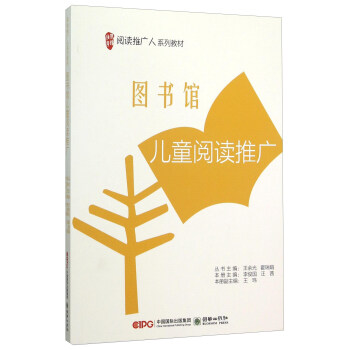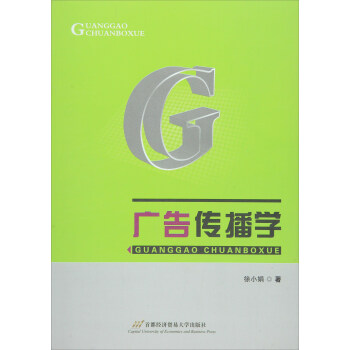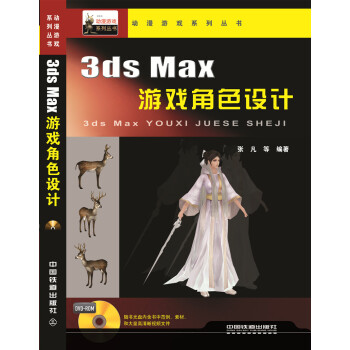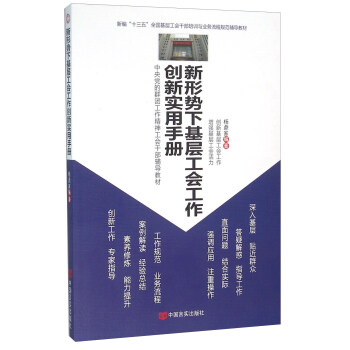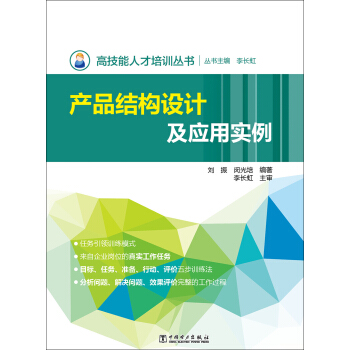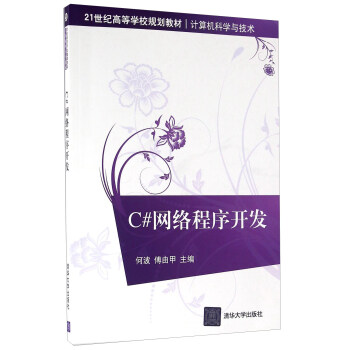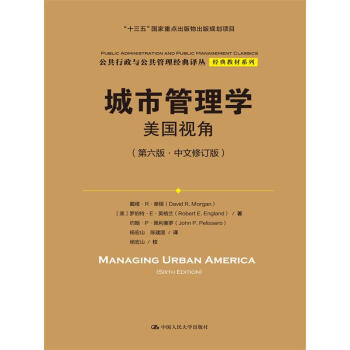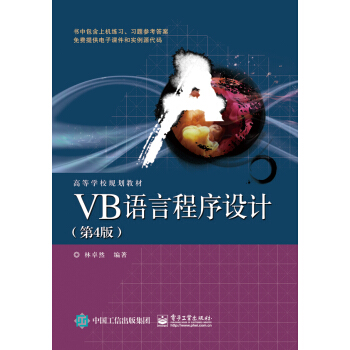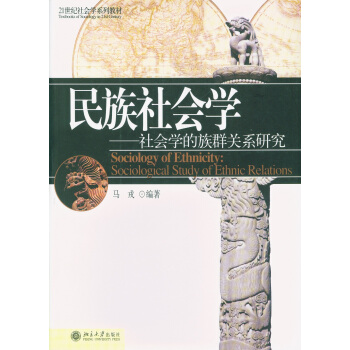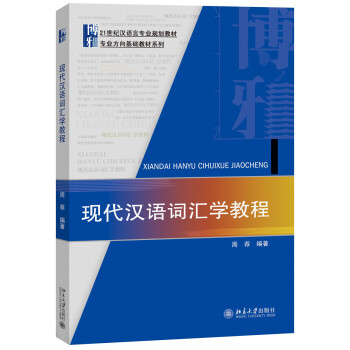

具体描述
编辑推荐
本《教程》自2002年出版以来,受到广大教师和学生的广泛欢迎,赢得了广泛的赞誉,为我国语言学事业做出巨大的贡献。该书是在《语言学教程》的基础上,,将语言学中难度较大、理论性较强的内容作专门的讨论,以供研究生教学使用。。但是,近10多年来,语言学的发展又取得了长足的进展,新的成果急需补充。有鉴于此,主编胡壮麟先生及一批中青年语言学家对教材做了修订。修订版听取了在第一线使用本书的老师们的意见,对有些意义不大的内容作了删除或删节,对十余年来语言学领域中的新进展作了充分反映。内容简介
《语言学高级教程》第一版出版于2002年。随着岁月的流逝,有些内容逐渐陈旧,不再适应读者的需要。为此,我们从2011年秋天开始筹划该教程的修订。我们联系了各位作者,征求了修订意见,确定了修订方案。为了不增加读者的负担,这次修订的总原则是一般不增加篇幅,增添新内容,因而要相应地删减部分旧内容。在各位作者的努力下,2013年5月完成修订,大多数章节都有一些改动。除了改正一些错误以外,变动比较大的是,原来的第二章(Phonetics)和第三章(Phonology)被合并成了一章,缩减了语音学的一些内容,更名为Phonological Analysis;第七章Linguistic Comparison(原第八章)增加了对比语言学一节;第九章(原第十章Psycholinguistics)改成了Cognitive Linguistics,以反映当代语言学新近的发展;第十章Pragmatics(原第十一章)删减了一些内容,增加了一个新小节;第十二章Computational Linguistics(原第十三章)删除了两个小节,充实了一个小节;原第十五章整章删除。
作者简介
本教材主编胡壮麟先生是著名语言学家、北京大学英语系资深教授、系统功能语言学的代表学者。本教材参编者是北京大学,上海交通大学等的优秀学者。他们不仅在各自的学术领域具有深厚的理论基础,同时具有丰富的教学实践经验。目录
Chapter 1Linguistics—A Pilot Science1.1Why Study Linguistics?
1.2What Is Language?—Defining the Object of Study
1.3Origin of Language
1.4Design Features of Language
1.5Animal Communication Systems, Gesture and
Other Language Forms
1.6Perspectives of Language Studies
1.7Functions of Language
1.8Important Distinctions in Linguistics
1.9Data of Linguistics
1.10Status and Prospect of Linguistics
Chapter 2Phonological Analysis
2.1Transcribing Speech Sounds
2.2Consonants and Vowels
2.3Phonemic vs. Phonetic Transcriptions
2.4Distinctive Features and Rule Representation
2.5Suprasegmentals and Feature Geometry
2.6Optimality Theory
2.7Conclusion
Chapter 3Morphology
3.1Morphemes, Morphs and Allomorphs
3.2Classification of Morphemes
3.3Morphemization
3.4Allomorphy
3.5Word, Word�瞗orm and Lexeme
3.6Morphology and Word�瞗ormation
3.7Approaches and Problems
Chapter 4Generative Syntax
4.1Generative Grammar: Some Basic Assumptions
4.2Phrase Structure Rules
4.3Projection from Lexicon
4.4The Minimalist Approach
Chapter 5Functional Syntax
5.1Vilém Mathesius
5.2Franti�宔k Dane��
5.3Michael Halliday
5.4Summary
Chapter 6Semantics
6.1Introduction
6.2Meanings of “Meaning”
6.3The Referential Theory
6.4Sense Relations
6.5Componential Analysis
6.6Sentence Meaning
Chapter 7Linguistic Comparison
7.1Introduction
7.2Comparative and Historical Linguistics
7.3Typological Comparison
7.4Contrastive Linguistics
Chapter 8Language, Culture, and Society
8.1Introduction
8.2Language and Culture
8.3Language and Society
8.4Sociolinguistics and Language Teaching
8.5Summary
Chapter 9Cognitive Linguistics
9.1Introduction
9.2Cognitive Abilities and Cognitive Processes
9.3Cognitive Semantics
9.4Cognitive Grammar
Chapter 10Pragmatics
10.1Introduction
10.2Speech Act Theory
10.3The Classical Theory of Implicature
10.4Post�睪ricean Theories
10.5Recent Developments in Pragmatics
Chapter 11Issues of Stylistics
11.1Introduction
11.2Style and Stylistics
11.3Style as Rhetoric: The Initial Stage of Stylistics
11.4One Style or Several Styles?
11.5Aspects of Style: The Writer�瞫tyle as Writer’s
Individual/Personal Singularities
11.6Aspects of Style: The Text�瞫tyle as Linguistic
Sameness (Structural Equivalence)
11.7Aspects of Style: The Text�瞫tyle as Linguistic
Difference (Deviation or Foregrounding)
11.8Aspects of Style: The Reader�瞫tyle
as Reader’s Response
11.9Aspects of Style: The Context:
Style as Function
11.10Aspects of Style: The Meaning:
Style as Meaning Potential
11.11Concluding Remarks: Linguistics,
Literary Criticism, and Stylistics
Chapter 12Computational Linguistics
12.1What is Computational Linguistics?
12.2Machine Translation
12.3Corpus Linguistics
12.4Information Retrieval
12.5Looking into the Future
Chapter 13Second Language Acquisition
13.1Introduction
13.2The Role of Internal Mechanisms
13.3The Role of Native Language
13.4Input, Interaction and Output
13.5Non�瞝anguage Influences
13.6Summary
Chapter 14Modern Theories and Schools of Linguistics
14.1The Beginning of Modern Linguistics
14.2The Prague School and the Copenhagen School
14.3The London School
14.4Halliday and Systemic�睩unctional Grammar
14.5American Structuralism
14.6Chomsky and Transformational�睪enerative Grammar
14.7Revisionist/Rebellious Theories
14.8Concluding Remarks
前言/序言
用户评价
说实话,在翻阅《语言学高级教程(第二版)》之前,我对“形式语言学”的印象,总带着点高高在上、遥不可及的感觉。那些复杂的符号、严谨的规则,总让我觉得它们离鲜活的口语表达太远。然而,这本书却以一种令人意想不到的方式,将形式语言学变得触手可及,甚至充满了趣味性。作者并没有回避形式语言学的技术性,但她/他选择了一种循序渐进、由浅入深的方式进行讲解,让我在不知不觉中,就掌握了分析句子结构、理解语法规则的工具。 书中关于句法学的部分,对不同理论框架下的句子结构分析,进行了一一对比和阐释。我曾经在学习其他教材时,对某种句法分析感到困惑,觉得它不够直观。但在这本书中,作者利用大量的图示和实例,将抽象的句法理论具象化,让我能够清晰地看到句子的层次结构,以及词语之间错综复杂的关系。尤其是关于“主语移位”、“递归”等核心概念的解释,配合着精心设计的练习题,让我得以在实践中巩固所学。更让我惊喜的是,书中还探讨了形式语言学在处理非标准语、儿童语等特殊语料时的局限性和可能性,这让我看到了形式理论的生命力,也让我对语言的创造性有了更深的理解。
评分拿到《语言学高级教程(第二版)》的时候,我正面临着一个棘手的研究课题:如何才能更有效地分析跨语言现象中的共性与差异?我尝试了各种方法,但总觉得差了点什么。这本书的出现,简直是给我指明了方向。它在“跨语言研究”这个章节,简直像是一本百科全书,又像是一本操作指南,让我受益匪浅。作者并非简单地罗列不同语言的特征,而是从更宏观的视角,探讨了语言的普遍性原则和语言的类型学分类。 书中关于“语言普遍项”的讨论,让我对语言的共性有了全新的认识。它不再是抽象的理论,而是通过对大量语言数据的分析,展示了人类语言系统在底层存在的某些共同的约束和模式。我尤其对书中关于“名词短语的中心语位置”和“动词的语序”等方面的论述印象深刻,它让我明白了为什么世界上许多语言在这些方面表现出惊人的一致性。同时,作者也并没有忽视语言的差异性,而是通过对世界各地语言的生动案例,展示了语言的丰富多样性。这种既关注共性又尊重差异的分析方法,让我对跨语言研究的思路有了根本性的改变,也让我对接下来的研究充满了信心。
评分在我看来,一本好的学术著作,不仅在于其内容的深度和理论的严谨,更在于它能否激发读者的思考,能否在读者心中播下探索的种子。《语言学高级教程(第二版)》无疑做到了这一点。这本书在每一个章节的结尾,都设计了引导性的思考题和练习题,这些题目并非简单的知识点复述,而是具有相当的挑战性,能够引导读者主动去分析、去推理,去发现语言中的更多奥秘。 我尤其喜欢书中对一些“争议性”话题的处理方式。作者并没有简单地给出定论,而是呈现了不同学派的观点,并分析了它们的优劣之处。这种“开放性”的讨论方式,让我看到了科学研究的本质,即不断地质疑、不断地探索。在阅读过程中,我常常会因为某个观点的不同而产生疑问,而书中提供的思考题,恰恰能够引导我去寻找答案,去形成自己的见解。这种“互动性”的学习体验,让我感觉自己不仅仅是在被动地接受知识,而是在主动地参与到语言学的探索过程中,这是一种非常宝贵的学习体验。
评分在语言学研究的领域中,我一直认为“语料库分析”是衡量一门学科是否具有“科学性”和“实证性”的重要标志。《语言学高级教程(第二版)》在这方面,为我打开了一扇全新的大门。书中关于“语料库语言学”的专题论述,让我看到了大数据时代下语言研究的强大生命力。作者不仅仅是在介绍语料库的构建和使用方法,更是通过大量的实例,展示了如何利用语料库来验证理论、发现新现象。 我尤其对书中关于“词汇频率分析”、“搭配分析”以及“语篇连接词分析”等方面的阐述印象深刻。作者通过对海量真实语料的分析,揭示了语言在使用中的一些规律和模式,这些规律和模式,往往是仅凭直觉难以发现的。例如,在讨论某个词语的用法时,作者会通过语料库数据来分析其常用的搭配、出现的语境,以及其在不同语篇中的频率。这种“数据驱动”的研究方法,让我看到了语言学研究的客观性和精确性。这本书让我明白,语言学不仅仅是纸上谈兵,更是可以通过科学的分析方法,来揭示语言的本质。
评分说实话,我是一名对语言学充满热情,但又常常被繁复理论所困扰的“半路出家”者。《语言学高级教程(第二版)》的出现,无疑是我学习道路上的一个重要转折点。这本书最令我赞叹的是其“深度与广度”的完美结合。它既有对语言学核心概念的深度挖掘,又不乏对相关新兴领域和前沿问题的广泛涉猎。 书中对于“计算语言学”、“神经语言学”等新兴领域的介绍,虽然篇幅不长,但却精准地抓住了这些领域的精髓。作者以一种简洁而深刻的方式,阐述了计算语言学在自然语言处理、机器翻译等方面的应用,以及神经语言学在探索语言与大脑机制之间的关系上的突破。这些内容,不仅让我对语言学的最新发展有了初步的了解,更激发了我对这些交叉学科的浓厚兴趣。我曾经认为,语言学研究只能局限于传统的文本分析,而这本书则向我展示了语言学与其他学科的广阔融合前景,这让我对未来的学习和研究方向有了更多的思考。
评分在语言学研究的漫漫征途中,我常常感到孤立无援,仿佛置身于一片浩瀚的知识海洋,却找不到合适的航海图。而《语言学高级教程(第二版)》的出现,如同一张清晰而详尽的地图,为我指明了前行的方向。这本书的整体结构安排,可以说是我见过的最合理、最富有逻辑性的。它从最基础的语音,一路延伸到复杂的语篇分析,层层递进,环环相扣。 我尤其欣赏书中在介绍每个新的概念或理论时,都会先回顾之前的内容,并说明它与之前知识的联系。这种“温故而知新”的教学方式,让我能够更好地理解和吸收新的知识。书中对于不同语言学分支的介绍,并非孤立存在,而是充满了作者对它们之间相互关系的深刻理解。例如,在讨论句法学时,作者会自然地引入语义学和语用学的相关概念,并说明它们是如何相互影响、共同作用的。这种“系统性”的教学方式,让我对语言学这门学科的整体框架有了更清晰的认识,也让我看到了不同分支之间的内在联系和统一性。
评分当我翻开《语言学高级教程(第二版)》时,我内心是充满期待的,但同时,也有一丝忐忑。毕竟,“高级”二字,往往意味着晦涩难懂,理论繁复。然而,这本书却用它独特的魅力,打消了我所有的顾虑。作者以一种极其平实而又充满智慧的笔触,将那些原本可能令人望而却步的语言学概念,一一呈现。尤其是关于“语义学”和“语用学”的结合之处,让我看到了语言的意义,是如何在形式结构和实际使用中,不断被建构和解读的。 书中对于“指称”、“含义”、“预设”、“含义”等核心语义概念的阐释,都非常到位。作者通过大量的实例,将这些抽象的概念具体化,让我能够清晰地理解它们在实际语言交流中的作用。而当这些概念与语用学的原理相结合时,则更是妙趣横生。我曾经在分析一个具有讽刺意味的句子时,感到捉襟见肘,不知道如何解释其言外之意。而这本书中关于“会话含义”、“合作原则”以及“关联理论”的阐述,则为我提供了强有力的理论支撑。作者并没有简单地停留在理论的层面,而是通过对对话、广告语等语料的分析,展示了理论是如何在实践中发挥作用的,这让我深刻体会到了语言的动态性和创造性。
评分这本书的出现,对我这个在语言学研究的海洋里摸索了多年的“老船员”来说,无异于一艘及时抵达的灯塔。翻开《语言学高级教程(第二版)》的那一刻,我内心涌起的,与其说是惊喜,不如说是一种宿命般的契合。我曾几何时,在某本入门读物的结尾,带着一丝不甘和几分迷茫,默默期盼着一本能够真正引领我深入语音、音系、形态、句法、语义、语用等核心领域的著作。而这本书,恰恰满足了我对“高级”二字的所有想象,甚至超越了。 它没有停留在概念的堆砌,也没有止步于理论的介绍。作者以一种近乎手术刀般的精准,解剖着语言的每一个细微之处。譬如在讨论语音学的部分,书中关于元音的舌位图描绘,配合着大量真实语料的声学分析,让我对那些曾经模糊不清的音素差异有了前所未有的清晰认知。我曾经在分析某个方言的韵母时,屡屡陷入困境,感觉自己像是隔着一层毛玻璃在观察,而这本书则像是一张高清的显微镜图像,将每一个细微的声学特征都毫无保留地呈现在我面前。尤其是关于超音段特征的讨论,不仅仅是语调、重音的简单罗列,而是将其置于语用和语篇的宏大框架下进行解读,解释了为什么同一句话在不同的语境下会产生截然不同的意义。这种深度,对于任何一个想要在语言学领域有所建树的研究者来说,都是不可或缺的。
评分我一直以为,语言学研究的魅力在于其逻辑的严谨和理论的精妙。然而,《语言学高级教程(第二版)》却向我展示了另一种截然不同的风景——语言的鲜活与变化。读这本书,就好像走进了语言学家们的世界,看到了他们如何怀揣着好奇心,像侦探一样,从零散的语言现象中抽丝剥茧,构建出宏大的理论体系。书中对历代语言学理论的梳理,并非简单的史料堆砌,而是充满了作者深刻的洞察和独到的评价。从乔姆斯基的转换生成语法,到功能语言学,再到认知语言学,作者以一种流畅而富有启发性的方式,将这些看似独立的理论串联起来,并清晰地勾勒出它们之间的发展脉络和相互影响。 我尤其欣赏书中对于“语言变化”这一议题的阐述。它不仅仅是枯燥的历时比较,而是将社会因素、心理因素,甚至是偶然因素都纳入了考量。作者通过对历史文献的细致分析,以及对当代语言变异的生动描绘,让我真切地感受到了语言作为一种活的生命体,是如何在历史的长河中不断演化、重塑自身的。书中关于语音演变的案例,比如某个辅音在不同历史时期如何发生变化,以及这些变化如何影响到词汇和句法的结构,都给我留下了深刻的印象。它让我意识到,语言学研究并非仅仅是对静态结构的分析,更是对动态过程的理解。这种对“变”的关注,让我对语言的未来充满了好奇,也激发了我对语言演变机制进行更深入探索的兴趣。
评分作为一名长年从事语言教育工作的老师,我一直在寻找一本能够真正帮助我提升教学水平的著作。《语言学高级教程(第二版)》的问世,可以说是我教学道路上的“及时雨”。这本书在理论的深度之外,还展现了其在“教学实践”上的巨大价值。作者在讲解每一个理论时,都非常注重结合具体的教学案例和语言现象,这让我在阅读时,仿佛置身于一个充满活力的语言课堂。 书中关于“语言习得”和“语言教学”的章节,尤其令我耳目一新。作者不仅仅是在介绍相关的理论,更是将这些理论与实际的教学场景相结合,为我提供了许多切实可行的教学方法和思路。例如,在讨论儿童语言习得时,书中对不同年龄段儿童的语言发展特征的细致描绘,以及对影响语言习得的多种因素的分析,都为我设计面向不同年龄段儿童的教学活动提供了重要的参考。同时,书中还探讨了如何将一些复杂的语言学理论,以更易于理解的方式传达给学生,这对于我改进教学方法,提升教学效果,有着极其重要的意义。
评分教材必备,新版,不过内容没有想象中改动大
评分还行,目前需要,但是感觉没有什么变化
评分不错。。。。。。。。。
评分英文额,买错了,呜呜
评分本《教程》自2002年出版以来,受到广大教师和学生的广泛欢迎,赢得了广泛的赞誉,为我国语言学事业做出巨大的贡献。该书是在《语言学教程》的基础上,,将语言学中难度较大、理论性较强的内容作专门的讨论,以供研究生教学使用。。但是,近10多年来,语言学的发展又取得了长足的进展,新的成果急需补充。有鉴于此,主编胡壮麟先生及一批中青年语言学家对教材做了修订。修订版听取了在第一线使用本书的老师们的意见,对有些意义不大的内容作了删除或删节,对十余年来语言学领域中的新进展作了充分反映。
评分本《教程》自2002年出版以来,受到广大教师和学生的广泛欢迎,赢得了广泛的赞誉,为我国语言学事业做出巨大的贡献。该书是在《语言学教程》的基础上,,将语言学中难度较大、理论性较强的内容作专门的讨论,以供研究生教学使用。。但是,近10多年来,语言学的发展又取得了长足的进展,新的成果急需补充。有鉴于此,主编胡壮麟先生及一批中青年语言学家对教材做了修订。修订版听取了在第一线使用本书的老师们的意见,对有些意义不大的内容作了删除或删节,对十余年来语言学领域中的新进展作了充分反映。
评分满意购物,孩子用着很好
评分物流很给力
评分英文额,买错了,呜呜
相关图书
本站所有内容均为互联网搜索引擎提供的公开搜索信息,本站不存储任何数据与内容,任何内容与数据均与本站无关,如有需要请联系相关搜索引擎包括但不限于百度,google,bing,sogou 等,本站所有链接都为正版商品购买链接。
© 2026 windowsfront.com All Rights Reserved. 静流书站 版权所有

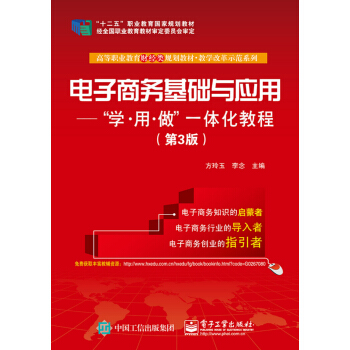
![科技英语基础阅读(附光盘) [Basic Readings in Scientific English] pdf epub mobi 电子书 下载](https://pic.windowsfront.com/11764733/55ed3a2cNfe1840e2.jpg)

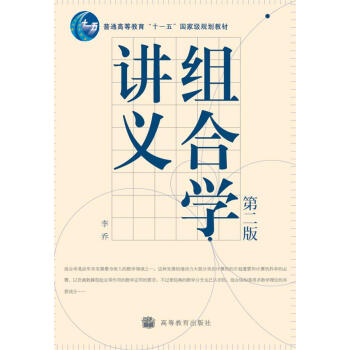

![数学地质 [Mathematical Geology] pdf epub mobi 电子书 下载](https://pic.windowsfront.com/11823296/565d0053N6c9ea659.jpg)
